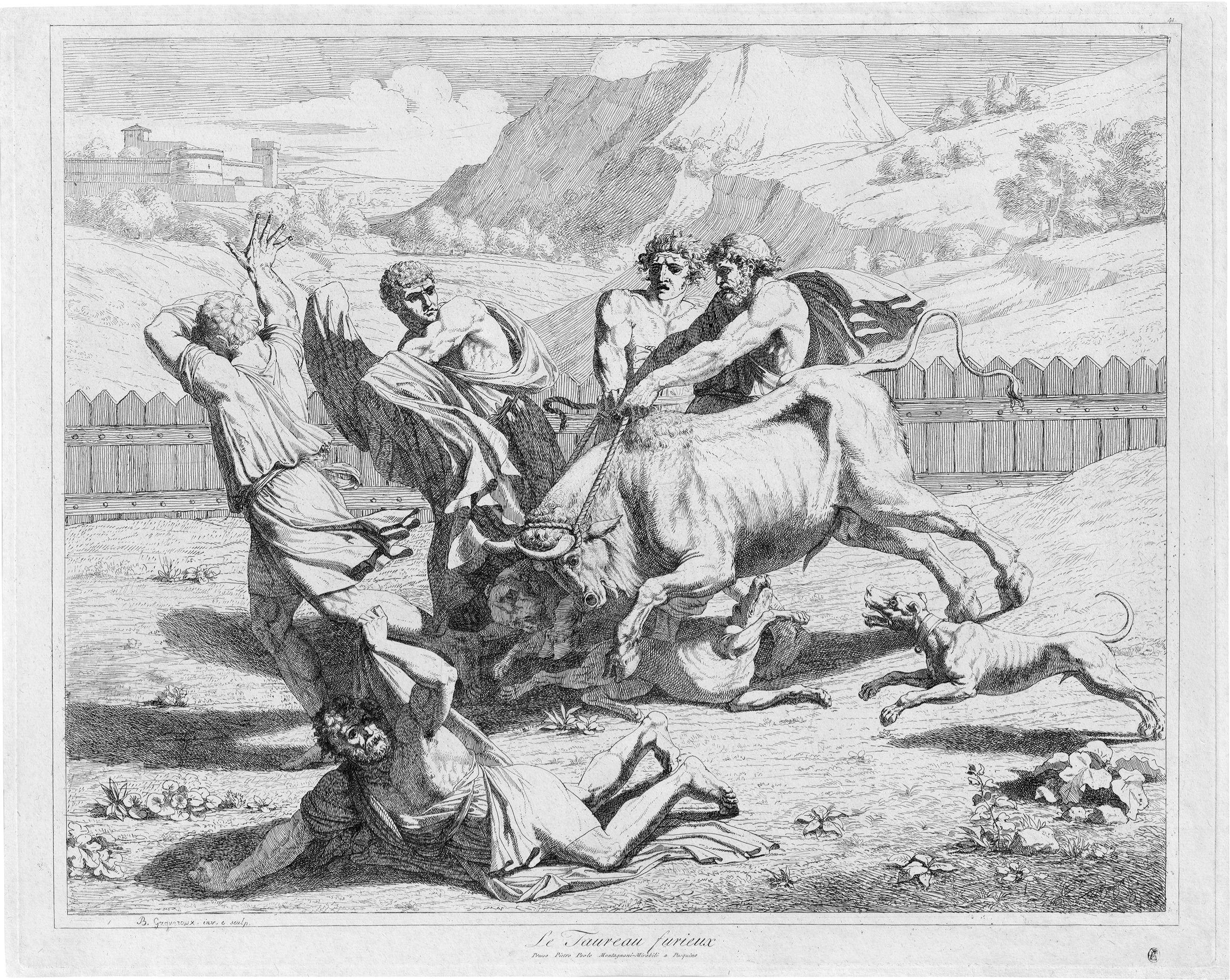Loading the page ...
Bénigne Gagneraux
(1756 Dijon – 1795 Florence)
Le Taureau Furieux. Etching. 48 x 60.2 cm. Not in Inventaire du Fonds Français.
The eventful career of the painter and etcher, Bénigne Gagneraux, reflects the major political upheavals of his time. His talent won him the Prix de Rome in 1776 and he began his studies in the Eternal City in 1778. Initially Gagneraux earned a living by making copies after Old Masters and working as a decoration painter. He thus came to the attention of King Gustav III of Sweden, who forthwith made the artist his protégé. Gagneraux gained his first major public success with a work commissioned in 1785 entitled The Meeting between Gustav III and Pius VI in the Vatican Museum of Antiquities (Nationalmuseum, Stockholm), which Goethe mentioned in the account of his journey to Italy and resulted in a visit to the artist’s studio in Rome by Duchess Amalie of Saxe-Weimar.
Even after the murder of Gustav III in 1792 Gagneraux continued to work for the Swedish court as well as for the Roman nobiltà and French aristocrats who had fled the country. The artist was evidently a convinced monarchist, for in January
1793 he fled to Florence after having been wounded during a rally in Rome in opposition to the French Republic. Gagneraux was appointed a professor at the Academy and continued to work mostly for foreign clients. While he was in Florence,
Gagneraux was awarded the title of a Swedish court painter in 1794. However, he died in unclear circumstances in the summer of 1795 immediately before his departure for Sweden.
Le Taureau Furieux, a large and dramatic composition, has been treated in a strictly neoclassical formal idiom influenced by the stylistic canon of Jacques-Louis David. The depiction is distinguished by its linear purism and the unbridled momentum of the action. The furious bull crushes underfoot one of the dogs attacking it, while three wildly gesticulating men dressed in ancient chitons run for their lives. The scene has been rendered in a transparent, technically sophisticated etching technique. Dense cross-hatching alternates with fine stippling to create a varied graphic image of great visual appeal. The etching is very rare and not included in the Inventaire du Fonds Français compiled by Baudot. A superb, contrasting impression with even thread margins. Minor ageing, otherwise in excellent condition. From the collection of Frederick Augustus II of Saxony (Lugt 971).
Contact us for further information